However, there are two different types of social media channels: organic and paid. Organic marketing on social media is less expensive than paid advertising, but it takes longer to reach a large audience. Paid advertising will get more people faster, but it costs money upfront. This post explains how both can be integrated into your strategy and their difference to make the most out of each type.

Means of Persuasion
You can effectively persuade customers to buy your product with organic social media because organic content is considered educational and promotional. This content will directly highlight the features of your product and why people should use it, but it doesn't "sell" as much as paid advertising. Organic social media is an excellent way to build rapport with current customers and also reach prospective ones.
Paid social media, on the other hand, puts you in front of more people quickly. This type of advertising can take up a large percentage of your budget, and it won't be easy to get conversions because the customer isn't familiar with your product or service. Paid ads are best used if you already have an established brand or a strong following on social media.
Cost between the Two Strategies
Organic social media is less expensive than paid advertising, but you won't reach as many people. According to the article, " Organic marketing hinges on spending time and effort generating quality content that will naturally attract your target market." Paid ads are more costly at first because several factors determine how much you have to pay. For example, the amount you spend on Facebook ads depends on how many people see it and their interests. You can try to limit your costs by bidding lower or targeting a smaller audience.

Organic Marketing Builds upon Itself while Paid Marketing is Static
Organic marketing on social media has a better return on investment because it builds on itself. For example, if you have a Facebook page and post content periodically, people will see your posts in their feed even if they aren't following you. Eventually, if your posts are good enough, people will follow you and vice versa.
Paid advertising is static because it's a one-time expenditure with no residual effect. For example, if you spend money on ads that target people in your area, once those ads end, there is no guarantee that those same people will see your new ad. It all depends on how much competition exists for similar products, and services within your market.
Difference in Time in Seeing Results
Organic social media will take longer to see results than paid ads because it requires more effort on your part. A good post with engaging content will take time to gain traction online, and attract an audience. You may not notice a difference in the number of followers or views for months since organic success is dependent on how well the content is received. On the other hand, Paid advertising will show a drastic change in your results much quicker because you are putting yourself in front of more people from the very beginning.
How to Boost the Two Social Media Strategies
1. Do not Pay all Advertising Posts
It is easy to get carried away with paid advertising and spend all your money. It's essential to balance promotional content that you pay for, but that doesn't mean that every post needs to be paid. For example, the article suggests having three types of posts: promotional, educational, and informational. The promotional type can include paid ads, while the other two are organic. If you post something about your business every day, half of it should be promotional, and the rest can be educational or informational types.

2. Improve your best Paid Content
You should also boost your best-paid content, but you can optimize your organic content to perform better. If something is working, you can adjust it based on how well it performs or change things up with a different style of post that people are willing to share. Another idea is to end each social media post with an enticing call-to-action that encourages your followers to share your content.
3. Buy ads from People that are Similar to your Organic Followers
You can also buy ads from people that are similar to your organic followers. You should do this if you have a large social media following but want the advertisements to be cost-effective. You can do this with Facebook's Lookalike Audiences feature, a copy of your existing follower list, and strangers who share similarities with your followers.
Conclusion
It's a good idea to have a mix of paid and organic social media content, but you should always prioritize your organic posts. It takes more time to build a following on social media compared to advertising, but it'll be worth the upfront effort if people trust you to provide them with great content. By using both strategies in tandem, you should gain a loyal following, which will lead to more income from future ads.






















.png)



.svg)




